Digital Taxidermy
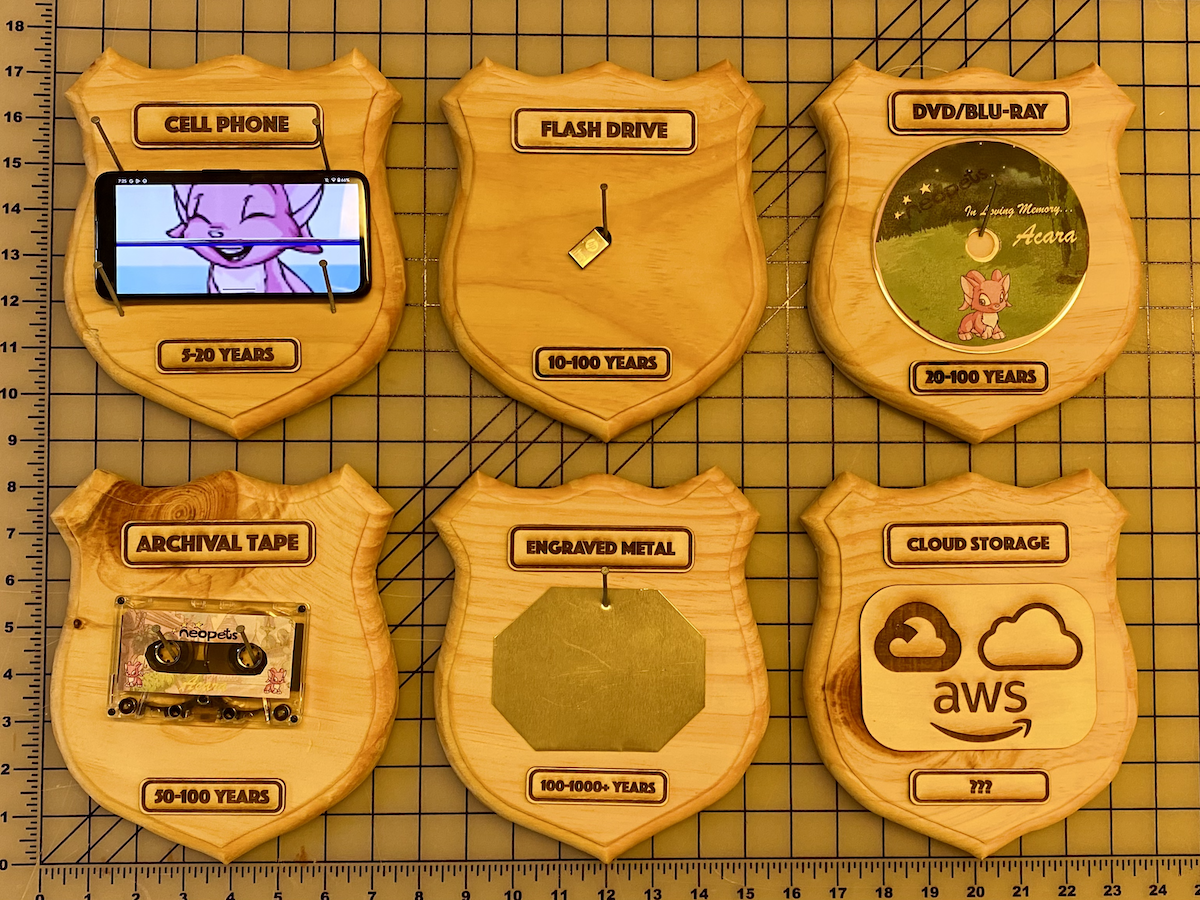
“Digital Taxidermy” by Levi Villarreal - 2025
For my first project in my Critical Experiences class, I had to create a ‘creative’ guide on a given topic. Mine was taxidermy.
Initially, I was interested in taking an approach that looked at taxidermy from an animal rights standpoint. I see taxidermy as another way that humans objectify animals and use their bodies for our pleasure. And I think especially in taxidermy, there is a non-intuitive range of what is seen as socially acceptable:
- ✅ Taxidermy for museums: Seen as ‘educational’ and discussed as if the animal willingly donated their body to science.
- ✅ Taxidermy of pets: Sometimes seen as creepy but also can seen as an expression of love for a lost ‘family member’.
- ❌ Taxidermy of hunted animals: Rich hunters are frequently shamed online for killing and mounting endangered animals such as rhinos, lions, etc. However, a hunter mounting a deer or fish is usually seen as ok.
- ❌ Taxidermy of humans: Extremely taboo in all but a few cultures (one such example is the Shuar people). However, it can also be seen as acceptable in historical settings such as showing off mummies, preserved ancient humans, etc.
I researched traditional taxidermy methods, and became more familiar with both the history and the specifics of the “art” of taxidermy.
However, I wanted to move the project in a direction that was less literal. Given that my graduate program is very technology-focused, I had the phrase digital taxidermy enter my thoughts and I was unable to shake it, even weeks later. It reminded me of a podcast I had listened to years ago, Game Over by 99% Invisible. The story chronicles the death of the online MMO EA Land / The Sims Online, and what it means for a living community online to cease to exist.
As I talked to others about the idea, I saw that nearly everyone had a very personal example of digital loss. Friends who had been locked out of NeoPet accounts, a coworker who’s Polyvore account vanished when the site was bought out, and lots of other examples of digital data being misplaced or deleted. It brought to the surface my own anxieties of digital ownership, and whether my physical and cloud based copies of data would be enough to stave off the loss of my digital life. I still remember in my operating systems course in college when I first learned about disc rot, and how both traditional hard drives and SSDs were not hard and solid as their names suggest.
I started researching different kinds of digital storage and how long they could last, and thought that it could be an interesting and informational topic for a guide.
The project
Between work and school, I had been spending a lot of time on my computer lately and wanted to do something physical to give my eyes and wrists a break. Taxidermy animal heads are stereotypically mounted on a wooden crest, and I wanted to copy that old-timey aesthetic for my digital project.
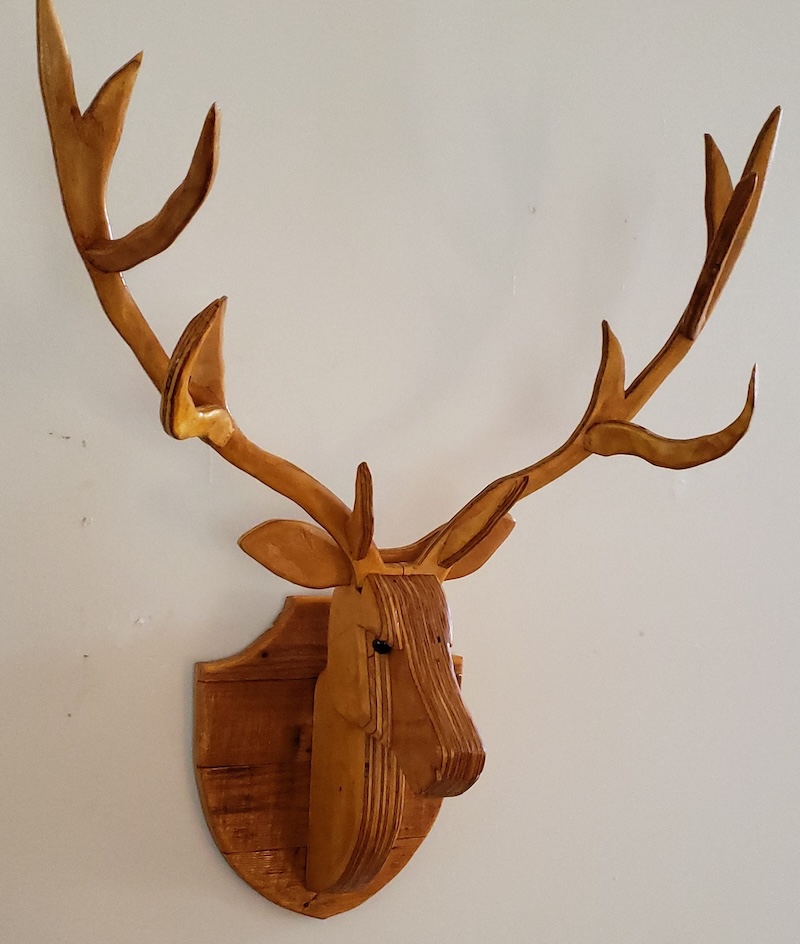
An example of a wooden taxidermy mount that is common for animal heads, fish, etc.
I started by creating a digital template for the crest and printed out a copy to glue to a plank of lumber I got from Home Depot. I used a circular saw to chop it down to size and then spent a long time using a bandsaw to painstakingly cut the outline of the mount.
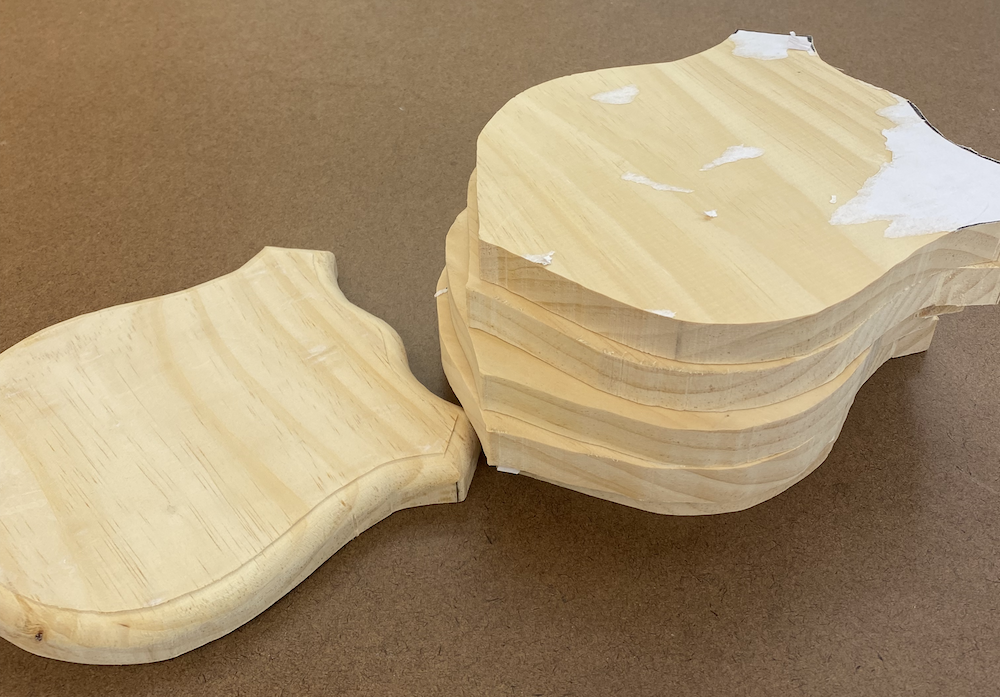
Wood after being cut down with the circular saw and bandsaw
I then brought the wood to a router to give the mount a more sophisticated, beveled edge.

Shot of the router beveling the edge
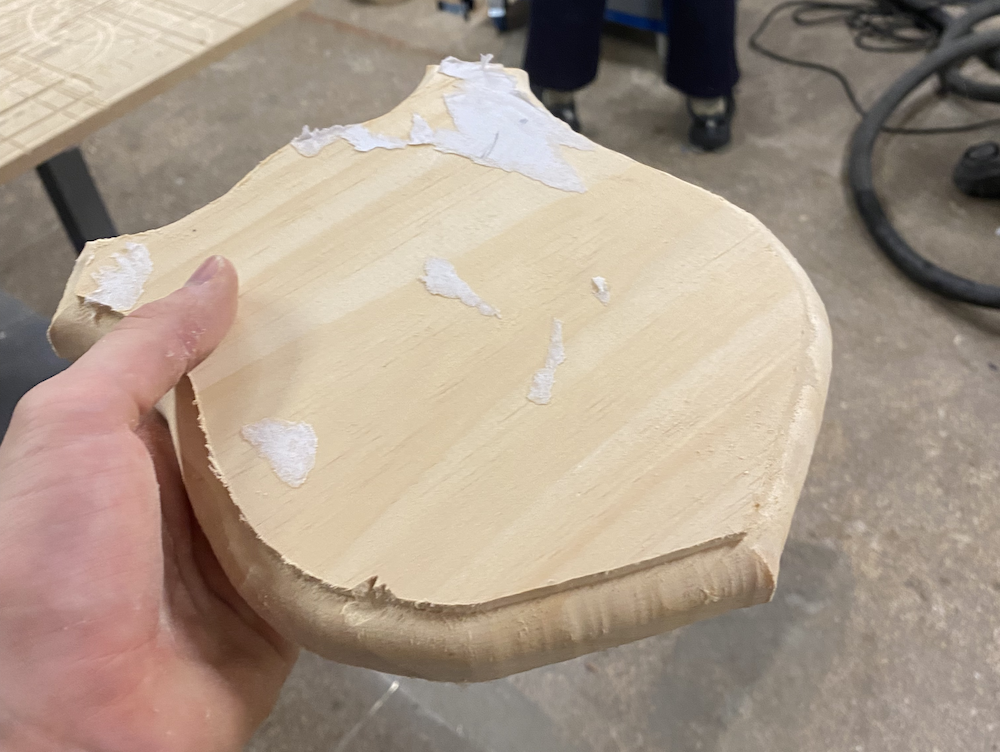
Shot after routing - with a small mishap leaving a chunk taken out of the wood
When I was satisfied that this technique worked well, I used the same process to make the remaining five wooden mounts. I then spent a while sanding down the mounts to get rid of visual imperfections. I then used acetone to clean the wooden surface of sawdust and finished the wood with a bottle of boiled linseed oil. This gave it a more finished look while still allowing the natural wood grain to shine through.
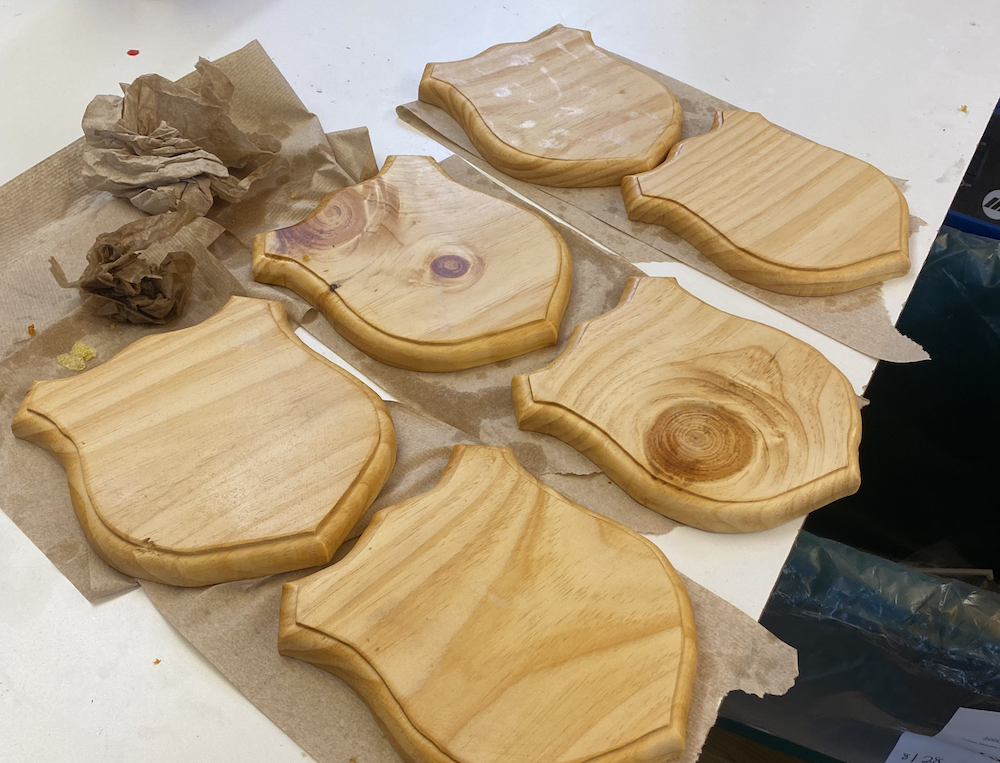
Finishing process - lots of oil and paper towels
I then created a design file for all of the labels I needed for the mounts, and laser cut thin balsa wood which I secured to the mounts with wood glue and then clamped overnight. Now I was ready to prepare the content for each of the mounts.
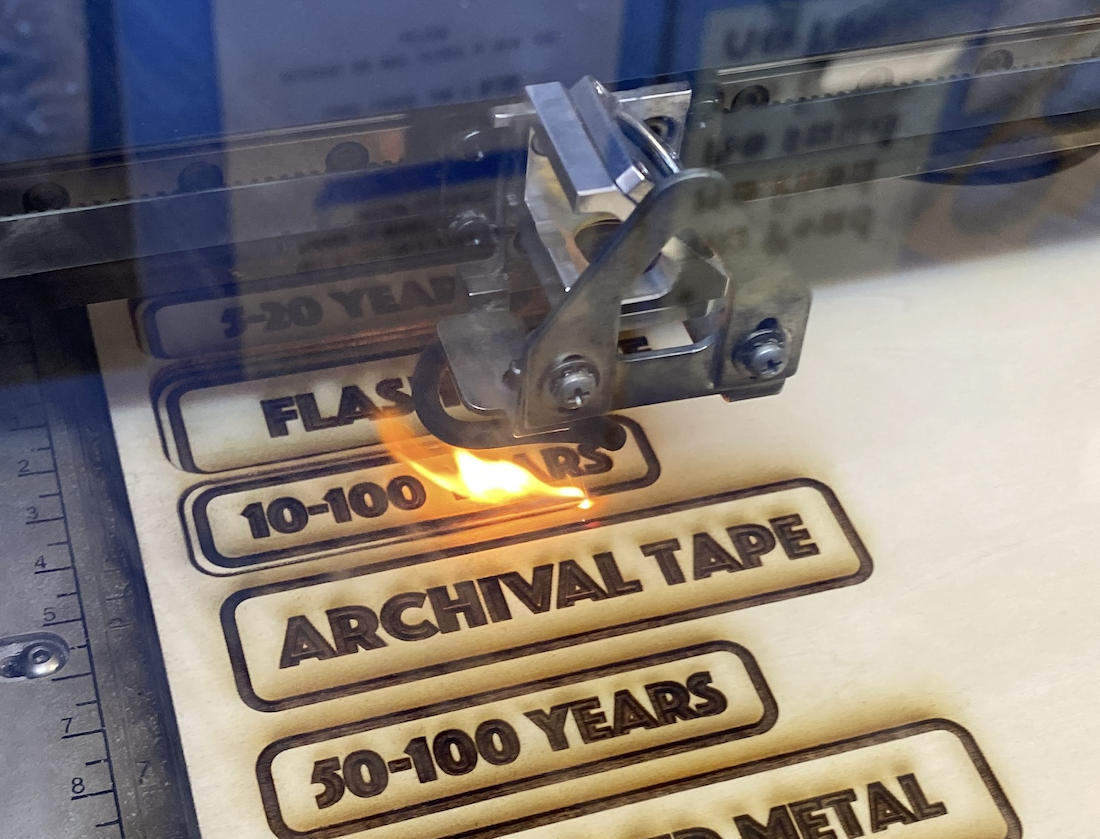
Laser cutter in action making the labels
Phone
I created a quick p5 sketch that used a glitch library to make it appear as if the neopet gif was being corrupted. I loaded the sketch on an old Android test device I had from work and mounted it between four nails on the wood.

Mount #1
USB drive
I couldn’t find a broken USB drive at work or at Best Buy’s ewaste bin (they stopped me from looking through it), so I used my personal usb drive. It had a small loop that I used to nail it to the board. Luckily it can be easily removed for when I need my data again.
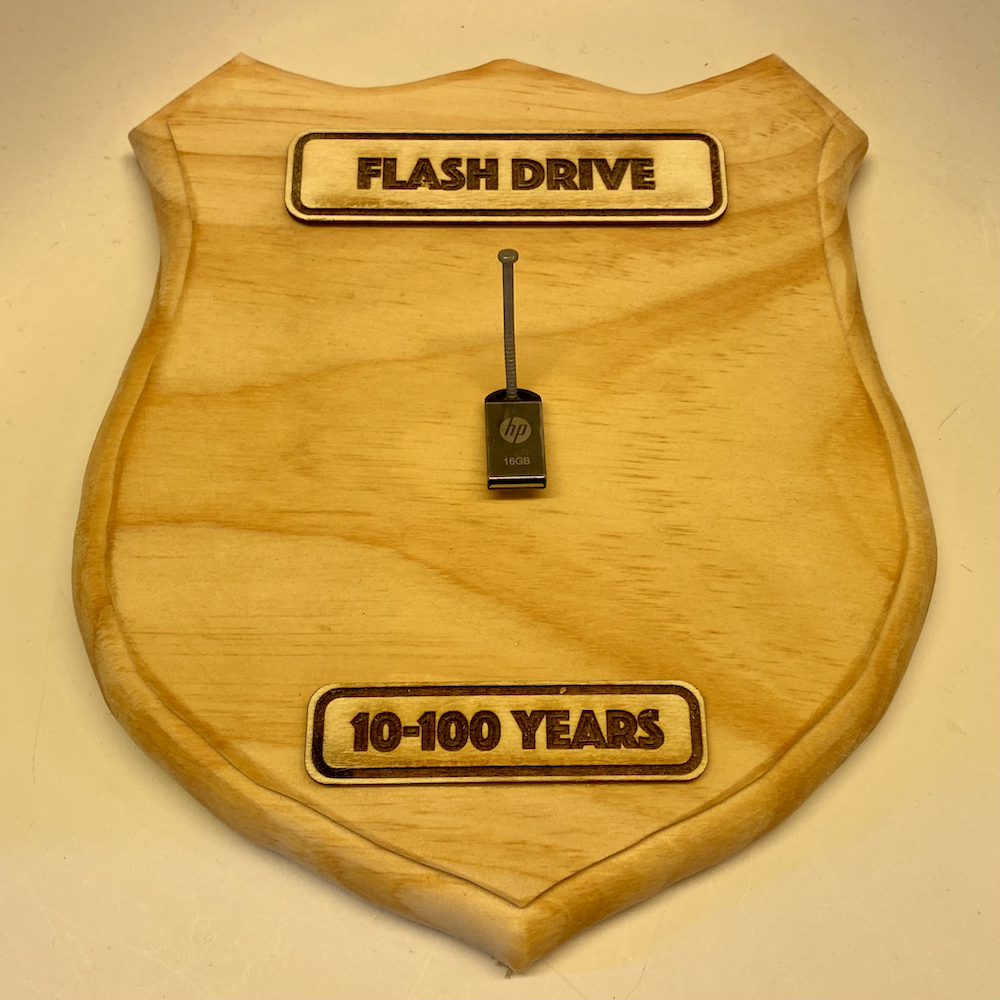
Mount #2
DVD
I bought a copy of The Marvelous Mrs. Maisel TV show from Goodwill on 14th street for 2.99. I designed and printed a simple replacement DVD art to fit the Neopet theme and taped it over the DVD. I want to eventually print the work with a higher quality sticker printer in the design lab, but I was a bit strapped for time on this project.
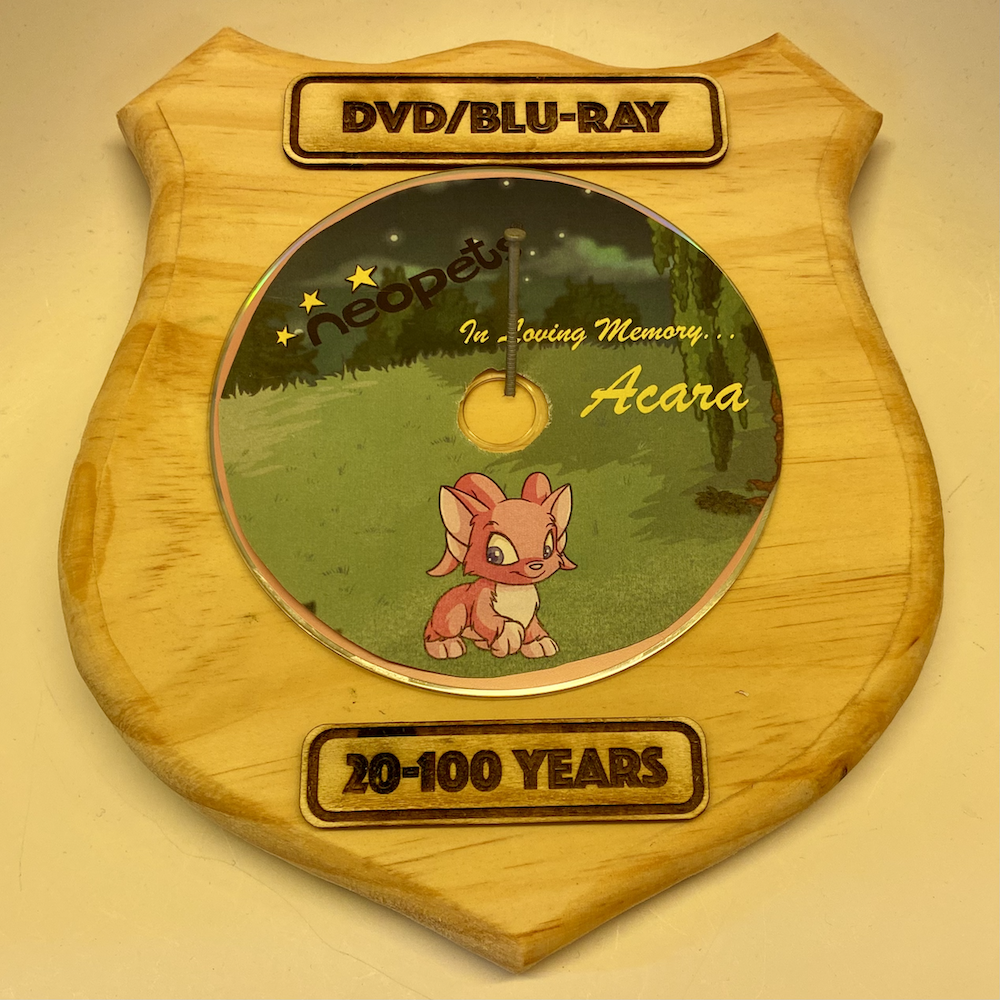
Mount #3
Cassette tape
I similarly bought this from Goodwill - I think it was originally a classical music tape. I unscrewed the cassette and took out the original graphic to replace it with my own I made using a cassette art template I found online. I want to similarly replace this with a higher quality sticker when I have the time.

Mount #4
Etched metal
This is the biggest miss of the project I bought a small sheet of aluminum from Home Depot hoping to use it with the ITP metal engraver. However, only one shop staff member knows how to use it and I haven’t been lucky enough to go while they’re working. I’m planning on engraving 1s and 0s as a representation of how digital data would actually be stored on metal, albeit on a much smaller scale.
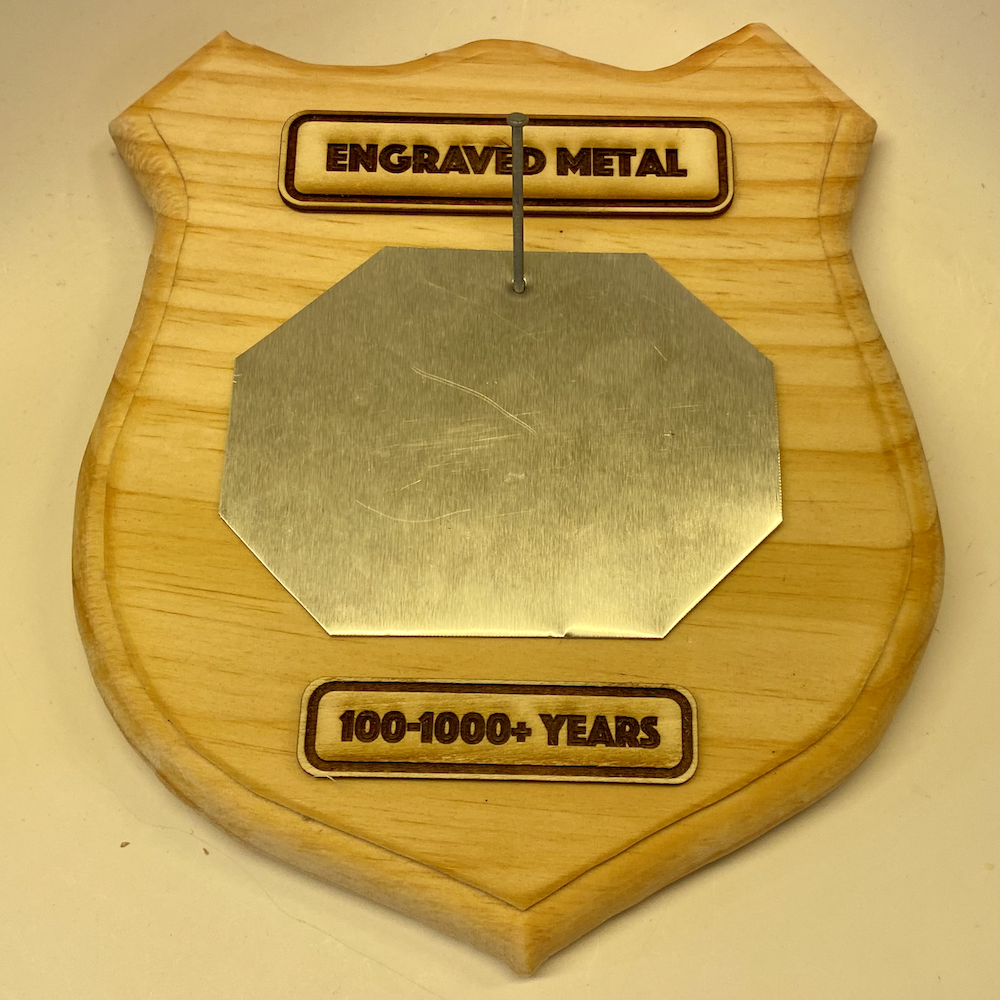
Mount #5
Cloud storage
This was represented with the logos of the three most recognizable cloud service providers in the country, AWS, Google Cloud, and iCloud. AWS alone stores over 400 trillion objects, and the timeline of cloud storage seems both infinite, but also subject to the whims of giant tech corporations.

Mount #6
Reflection
This project achieved what I set out to do. Providing some education on the lifespans of digital archival devices, providing an interesting/humorous juxtaposition of digital and physical techniques, and allowing the audience to reflect on their personal experiences with ‘digital taxidermy’.
While I was creating this project on the ITP floor, I got the chance to show it to a lot of fellow students. I also was able to present it in class, and showed a number of coworkers who asked what I had gotten up to over the weekend. A lot of people unprompted remarked, “oh those look like taxidermy mounts!” which was very affirming. A few people reacted with surprise over the short lifespans of the archival devices, and many had no idea that engraved metal could be used for such a task. Furthermore, I got to hear many stories of peoples relationships with Neopets, digital death, and favorite childhood websites. I was glad to have made something that sparked such interesting conversations.
One surprisingly hard aspect of the project was nailing down exactly what the lifespan for these devices were. Since digital media has only been around for a few decades, there is a lot of debate and speculation at exactly how long things like DVDs, hard drives, etc will last. There are so many variables to consider such as the storage temperature, how often the data is being accessed, and whether computers of the future would be able to read the data we store today. Thus I was left trying my best to provide ballpark numbers that could be generally accepted.
There was also a lot of room to improve on for form. My woodworking left a bit to be desired, and with some practice I should be able to create more symmetrical, polished wood pieces in the future. I also should have utilized the design lab and the laser engraver to create more polished decals and etchings for the DVD, tape, and engraved metal mounts. I also think the effect of the art could have been more pronounced if I created even more mounts with more archival mediums, and had a uniform way of actually mounting them on the wall.
Overall I am happy with where I got on the project. I was able to provide a guide that stayed true to the original topic and project brief, while changing it to make it my own. It sparked good conversations and interesting thoughts in both myself and others, and I learned skills that will better inform my future works.